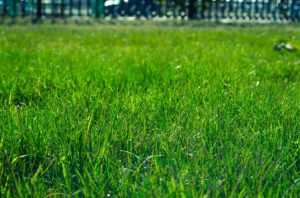 Has your lawn turned from a plush green to a patchy brown? The hot summer temperatures are probably to blame. Around here, it often gets into the 90s or even 100s during the summer, and the grass just can’t take it! Grass often turns brown when the roots are no longer able to absorb water or nutrients from soil. Stretches of high heat and low water can cause your lawn to go dormant. Common weeds, diseases and fungi, and insects like chinch bugs can also contribute to a brown lawn. But if your lawn is not yet dead, you can often revive it with a few common cures.
Has your lawn turned from a plush green to a patchy brown? The hot summer temperatures are probably to blame. Around here, it often gets into the 90s or even 100s during the summer, and the grass just can’t take it! Grass often turns brown when the roots are no longer able to absorb water or nutrients from soil. Stretches of high heat and low water can cause your lawn to go dormant. Common weeds, diseases and fungi, and insects like chinch bugs can also contribute to a brown lawn. But if your lawn is not yet dead, you can often revive it with a few common cures.
Rake to Remove Dead Grass
A buildup of dead grass and other debris can suffocate your lawn and prevent the soil from getting the nutrients it needs to thrive. While some grass clippings can be beneficial by acting as lawn food, you want to keep the layer of clippings to less than half an inch. Remove excess clippings with a rake. If you notice circular patches of thin, brown grass, check for signs of insect infestations or infections. If you suspect disease, clip the affected area down to the soil to prevent it from spreading.
Use a Spreader to Fertilize and Reseed
With just a few tools and supplies, you can revitalize your brown lawn over the course of a weekend. After removing any dead grass with a rake, use a walk-behind spreader to apply fertilizer to the lawn. Next, spread grass seed over any bare or thin areas of grass. Finally, spread a thin layer of compost over the seeded area. Use a garden hose to keep the area moist and to encourage healthy growth. Wait to fertilize your lawn again until the following spring.
Aerate Your Lawn Regularly
By aerating your lawn at least once a year, you can prevent your soil from becoming impacted, which can cause your grass to turn brown. Buy or rent a power core aerator from your local home improvement store to create healthier soil and grass. Using a self-propelled aerator on your lawn creates rows of tiny holes in the ground that encourages water, seeds, and nutrients to penetrate the soil. The best time to aerate your lawn is during the growing season. For cool-season grass, opt for the early spring or fall. If you have warm-season grass, aerate in the late spring.
Mow Your Lawn Frequently
Mowing your lawn regularly keeps it healthy and can help control the presence of many different pests. The more often you mow your lawn, the quicker it grows and recovers from damage. If your lawn is suffering from the heat, try to mow at least once a week during the summer. To prevent the underlying soil from drying out, make sure that the mower blade is not set too low. The current height of your grass is also an important consideration: To prevent damaging your grass, cut it no more than one-third of its current height.
